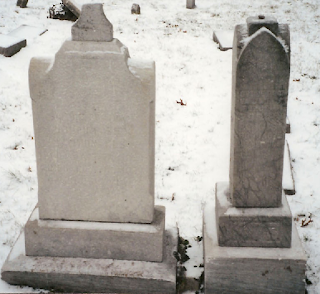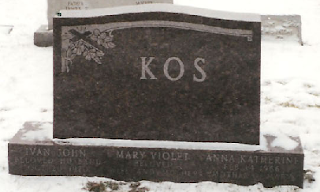Originally published on genealogyatheart.blogspot.com on 7 Aug 2015.
My daughter wants to get a dog in the next few months. Growing up, our kids have had lots of pets as my husband and I believe that the benefits far outweigh the work. Gaining responsibility and compassion, instilling nurture and playful fun are worth the cost and effort, IMHO.
 |
| Lab Mariah, Son holding cat Tinker and daughter holding rabbit Fluffy. They also had a parakeet, fish and turtles. |
Daughter will most likely find an older mutt at the local shelter. Son thought she ought to get a cat, instead, since she likes to travel. Hubby is just excited to finally be a “grandparent.”
We’ve been having a large amount of rain lately that limits outside activity so I decided last weekend to look through photo albums of our family’s pets. I was amazed to discover how far back the interaction of animals in my ancestors’ lives are recorded.
The oldest seems to be this pic of my mom and aunt from around 1923:
I wish I knew the pony’s name! Living on a farm, we had 12 ponies and a horse but my favorite was Dapple Brownie – I’m about the same age as my mom on her pony:
The oldest dog photo we have is of my husband’s grandmother, Elsie Johnson Harbaugh, from around 1942. The dog’s name has also been lost to history:
Funny how families tend to like similar breeds. Hubby’s family really liked small dogs; his
parents also had a poodle named Schatze when he was growing up and after he left home, Nano:
Hubby liked larger dogs but his parents drew the line and only allowed him to have a mid size mutt, Henry:
I miss Henry. He used to sit between my husband and I in the car on dates and hold my hand. Hubby said he knew I was the one as Henry was very particular about who he liked.
My side of the family liked big dogs. My dad always had collies:
 |
| Friend Debbie, Me and Lassie (not the famous one!) |
as did my twin cousins, with Twinks:
Since my parents were divorced, and my mom and I lived with my grandparents, I had Australian sheepdogs there. Here I am with Toto, as a puppy, who was hit by a car.
After his death, I cared for Toto’s sister, Snowball, until we moved to Florida and Snowball retired to a farm in Indiana. I also took care of my uncle’s weimaraner, Lucky, for a bit. Someone stole him from my uncle’s backyard and it broke my uncle’s heart:
Our next door neighbor, Mr. Bauer, had a small dog I played with, too:
Clearly, we aren’t just dog people as many cats have imprinted love on our hearts:
 |
| My cat, Blackie, at the farm |
 |
| Boots and kittens at my grandparents |
 |
| Thomasina and I at my grandparent’s house |
My husband had a kitten for a short time but it was a wild child so his parents had to return it:
Kiitie looks so innocent here but it scratched anyone who came near. When hubby and I were first on our own we got a cat, Midnight, at the pound:
Mid got into a cat fight when he was about 8 years old and died from an infection. We were so upset that it took us a year before we could get another pet. Eventually we got Tinker (the cat) and Misty (the dog).
who were the best of friends as we got them within 2 weeks of each other. Tinker lived 19 plus years and Misty, 12. These were the first pets our kids had.
Over the years we also adopted a stray, Cipher, who turned out wasn’t a stray. When we couldn’t find the owner we took Cipher to the vet – no chip so we got him shots and adopted him. Cipher slept at our house at night and we later learned was spending his days a few blocks away at a neighbor’s house. When the neighbor decided to get Cipher chipped (she was calling him Ben) she discovered we were his people. Cipher decided to move in with her permanently after I brought home two kittens who had been abandoned at the school where I worked.
Last but not least are 2 birds that I will never forget. The first is a wild bird that wasn’t very wild. Every time I went out to play the bird below would join me.
This went on for at least 3 years and as an adult, I realize how strange that is but as a child, I didn’t know that wild birds aren’t supposed to play with you.
When I was three, an elderly neighbor was moving and couldn’t take her parakeet with her so my mother said we’d look after the bird. The neighbor had had Chipper for about 20 years so my mom figured it wouldn’t live much longer. Surprise, surprise, Chipper happily chirped for the next 13 years. He didn’t like to leave his cage; he’d fly from one end of the room to the other and than land on the open door and go back inside. Chipper’s favorite show was same as that of my grandparents, Lawrence Welk, and later, The FBI. I don’t know why he liked the latter but he would sing so loudly you couldn’t hear the show.
I can’t wait to see how our two cats, Charlie and Parker, are going to behave when daughter’s dog visits. I’m expecting it will make for some more memorable family stories!





































